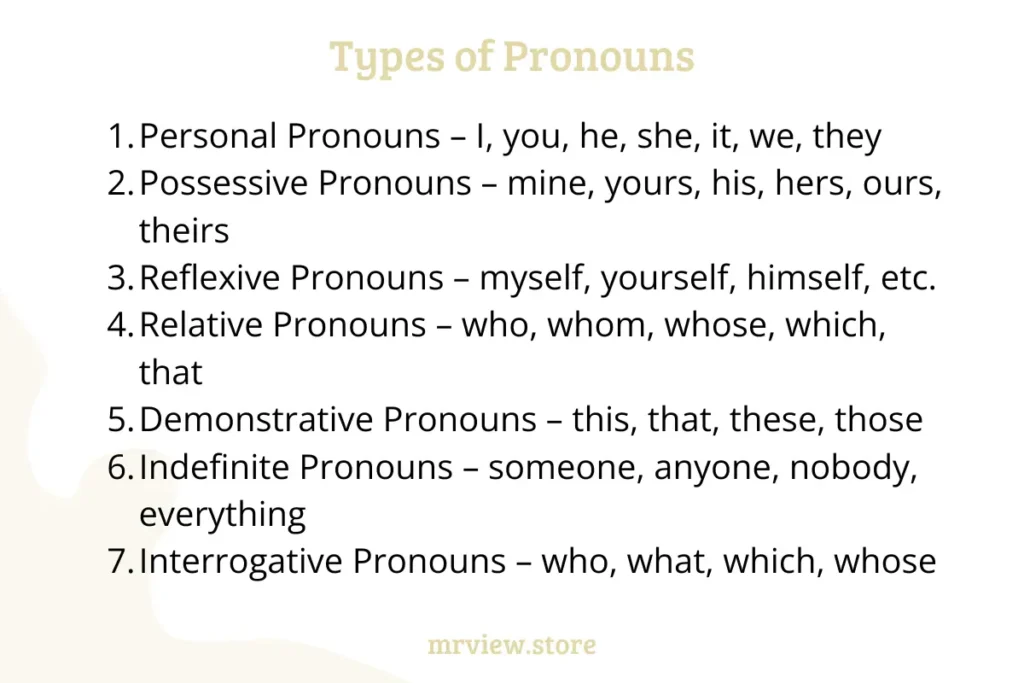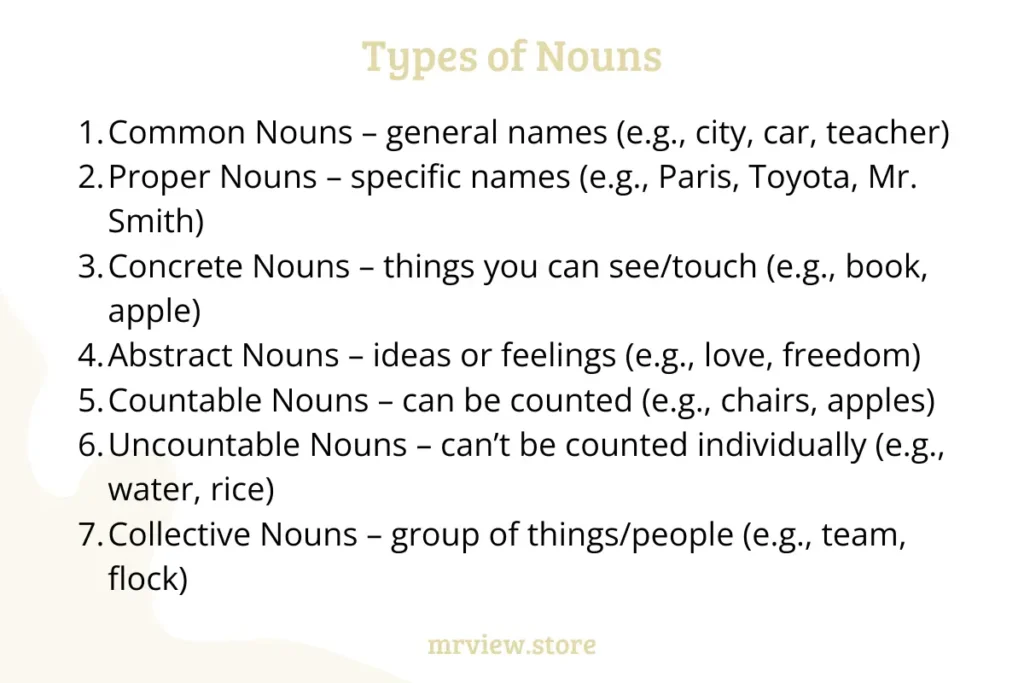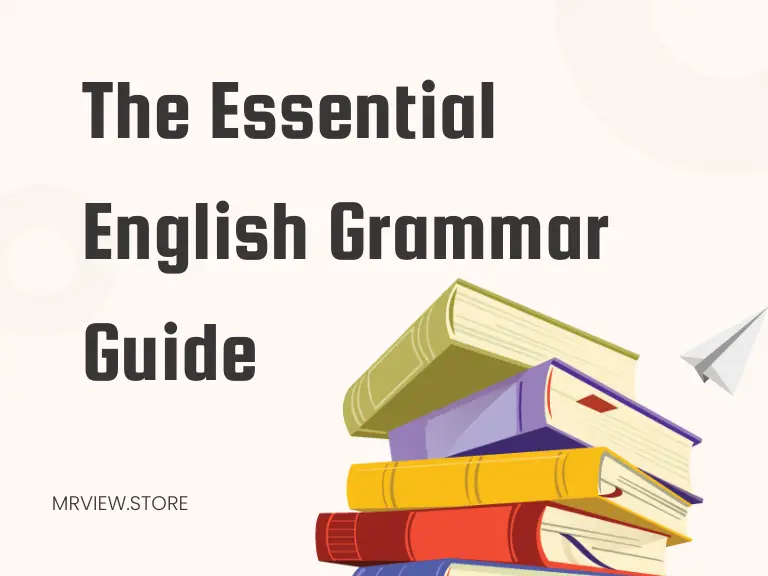Master the Building Blocks of English with Confidence and Clarity
English grammar doesn’t have to be confusing, dull, or overwhelming. In fact, it’s a lot like putting together a puzzle—once you know how the pieces fit, everything else starts to make sense. Whether you’re just starting out or brushing up your skills, this essential guide is your go-to resource to learn English grammar the easy way.
From understanding the parts of speech to polishing your punctuation, we’re breaking down grammar concepts into bite-sized, beginner-friendly sections. With examples, explanations, and a sprinkle of everyday language, you’ll feel like you’re learning from a friend—not a textbook. Let’s get to it!
Understanding the Basics
1.1 What is Grammar?
Grammar is the backbone of any language. It’s the set of rules that govern how we form sentences, use words, and communicate ideas clearly. Without grammar, language would be a mess of jumbled words—imagine texting without knowing word order or punctuation. Total chaos, right?
Think of grammar like the road signs of language. It tells you where to pause, how to connect thoughts, and how to avoid getting lost in translation. It gives meaning and structure to everything you say or write.
1.2 Parts of Speech
Before you dive deeper into grammar, you’ve got to know the eight core players—the parts of speech. These categories help you understand what each word does in a sentence. Here’s a quick breakdown:
- Nouns – Names of people, places, things, or ideas (e.g., cat, happiness, school).
- Pronouns – Words that replace nouns (e.g., he, she, it, they).
- Verbs – Action or state words (e.g., run, is, think).
- Adjectives – Describe nouns (e.g., blue, smart, happy).
- Adverbs – Describe verbs or adjectives (e.g., quickly, very, always).
- Prepositions – Show direction, location, or relationship (e.g., on, under, with).
- Conjunctions – Join words or clauses (e.g., and, but, because).
- Interjections – Express emotion or reaction (e.g., wow!, oh!, ouch!).
Knowing how to spot these in a sentence is your first step to writing and speaking with confidence.
1.3 Sentence Structure
Alright, now that we’ve met the parts of speech, let’s talk sentence structure. A solid sentence needs a few key ingredients:
- Subject – Who or what the sentence is about.
- Predicate – What the subject is doing (includes the verb).
- Objects and Complements – Extra info that completes the idea.
Here’s a basic example:
The dog (subject) barked (predicate).
There are also four types of sentences you’ll want to know:
- Declarative – Makes a statement (e.g., I love grammar.)
- Interrogative – Asks a question (e.g., Do you speak English?)
- Imperative – Gives a command (e.g., Please close the door.)
- Exclamatory – Shows emotion (e.g., What a beautiful day!)
Mastering sentence structure is key to communicating clearly and confidently—whether you’re chatting with a friend or writing a job application.
Mastering Nouns and Pronouns
2.1 Nouns – The Name Game
Let’s face it—nouns are everywhere. You can’t say much of anything without bumping into one. They’re the names of people, places, things, or ideas, and they’re the foundation of most sentences.
There are a few key types of nouns you should know:
- Common nouns – Generic names like dog, city, teacher.
- Proper nouns – Specific names like London, Mr. Smith, Coca-Cola. Always capitalized!
- Concrete nouns – Things you can touch or see (table, snow, phone).
- Abstract nouns – Things you can’t touch, like love, fear, honesty.
- Collective nouns – Words for groups like team, flock, family.
- Countable and uncountable nouns – Apples (you can count), but sugar? Not so much.

Here’s an example in action:
The excited dog ran across the yard.
In this case, dog and yard are common, concrete nouns.
2.2 Singular vs. Plural Nouns
This one’s pretty straightforward. One book is singular, two books is plural. Easy, right? Just add an -s or -es—usually.
But hey, English loves exceptions:
- Child becomes children.
- Mouse turns into mice.
- And don’t get us started on cactus (it can be cacti or cactuses—both are technically okay!).
2.3 Pronouns – Avoiding Repetition
Now, imagine saying this:
Lisa said Lisa would go to Lisa’s house after Lisa finishes Lisa’s homework.
Oof! That’s where pronouns swoop in to save the day.
Pronouns replace nouns to make speech and writing smoother:
- Subject pronouns – I, you, he, she, it, we, they
- Object pronouns – me, you, him, her, it, us, them
- Possessive pronouns – mine, yours, his, hers, ours, theirs
- Reflexive pronouns – myself, yourself, himself, herself, etc.
So instead of that clunky sentence above, we’d say:
Lisa said she would go to her house after she finishes her homework.
Much better, right?
2.4 Choosing the Right Pronoun
Here’s where many learners trip up—using the right pronoun form. Quick tip: the subject does the action, the object receives it.
Incorrect: Me went to the store.
Correct: I went to the store.
Also, keep an eye on gender-neutral language. Instead of saying he or she, more people now use they as a singular pronoun when gender isn’t known or when someone prefers it.
Verbs – The Heartbeat of Every Sentence
3.1 What Are Verbs and Why Do They Matter?
You guessed it—verbs are the powerhouses of your sentence. Without them, nothing happens. They describe actions, states, or occurrences. If a noun is the “who” or “what,” the verb is the “what’s happening.”
Take this simple sentence:
The cat sleeps.
Here, sleeps is the verb—short, sweet, and essential.
There are two major types of verbs you’ll want to wrap your brain around:
- Action verbs – These show physical or mental action (run, write, think, jump).
- State of being verbs (linking verbs) – These describe a condition or state (is, are, was, were, seem, become).
3.2 Verb Tenses – When Stuff Happens
Tenses are how we place verbs in time. Understanding verb tenses is a must if you want to speak and write clearly.
Here’s a lightning-fast breakdown:
- Present – I walk to school.
- Past – I walked to school.
- Future – I will walk to school.
But wait—there’s more! Each of these has perfect and continuous forms too. For example:
- Present perfect – I have walked.
- Past continuous – I was walking.
- Future perfect continuous – I will have been walking.
Yes, it sounds like a lot, but don’t sweat it. With practice, these become second nature.
3.3 Subject-Verb Agreement – Keeping Things in Sync
A classic English grammar trap! The subject and verb must agree in number. That means:
- He runs every morning. ✅
- He run every morning. ❌
Singular subjects take singular verbs, and plural subjects take plural verbs. It’s that simple—most of the time.
Keep an eye out for trickier examples:
- The team is winning. (A collective noun = singular here.)
- The players are winning. (Now it’s plural.)
3.4 Modal Verbs – The Helping Hands
Modal verbs express ability, possibility, permission, or obligation. They include:
- Can, could, may, might, must, shall, should, will, would
Example:
You should study tonight.
Here, should adds advice to the main verb.
Pro tip? Modal verbs are always followed by the base form of a verb (no -ing, -ed, or s added).

Adjectives and Adverbs – Describing the World Around You
4.1 What Are Adjectives?
Adjectives are the words that jazz up your nouns. They tell us what kind, how many, or which one.
Examples:
- A blue sky
- Three happy children
- That old book
They’re like seasoning for your sentences—too bland without them, too much and things get clunky. But used just right? Magic.
💡 Pro tip: Adjectives usually come before the noun or after linking verbs like is or seems.
The dress is elegant.
She wore a red dress.
4.2 Types of Adjectives to Know
- Descriptive – bright, tall, gentle
- Quantitative – many, few, several
- Demonstrative – this, that, these, those
- Possessive – my, your, their
- Interrogative – which, what, whose
Understanding these categories helps you build better, clearer sentences.
4.3 What Are Adverbs?
Adverbs describe verbs, adjectives, or other adverbs. They answer how, when, where, how often, or to what extent.
Examples:
- He runs quickly.
- She sings very well.
- They arrived late.
Most adverbs end in -ly, but not all. Words like fast, well, hard break the rule.
4.4 The Difference Between Adjectives and Adverbs
Here’s a common confusion.
- She is a quick runner. (Adjective – describes the noun runner)
- She runs quickly. (Adverb – describes the verb runs)
See that difference? Same idea, different job.
4.5 Where to Place Adjectives and Adverbs
- Adjectives usually go before the noun: a small dog
- Adverbs often go after the verb: runs smoothly
But English being English, word order can shift depending on what you’re emphasizing.
Need extra help? Resources like Cambridge Dictionary’s Grammar Guide can be a real game changer when you’re unsure where a word fits.
Prepositions and Conjunctions – The Glue of English Grammar
5.1 What Are Prepositions?
Prepositions are the quiet heroes of grammar. They show the relationship between a noun or pronoun and other parts of the sentence—especially regarding time, place, direction, or method.
Examples:
- The book is on the table.
- She walked to the store.
- I was born in July.
These tiny words might seem harmless, but they carry serious weight. Choosing the right preposition can completely change your meaning!
5.2 Common Preposition Categories
- Place – in, on, at, under, between
- Time – before, after, during, since
- Direction – to, from, into, onto
- Instrument/Means – by, with, via
Try this: “The cat is under the table” vs. “The cat is on the table.” Big difference, right?
Need a quick reference for these? The EF Education First Prepositions Guide breaks it down beautifully.
5.3 What Are Conjunctions?
Conjunctions connect ideas, words, phrases, or even entire sentences. They’re the bridges that keep everything flowing smoothly.
There are three main types:
- Coordinating Conjunctions – for, and, nor, but, or, yet, so (FANBOYS)
- I wanted to go out, but it rained.
- Subordinating Conjunctions – although, because, since, unless, while
- She stayed inside because it was cold.
- Correlative Conjunctions – either…or, neither…nor, not only…but also
- Either you apologize, or you leave.
5.4 Avoiding Common Mistakes
Here are a few hiccups learners often hit:
- ❌ He depends of me.
✅ He depends on me. - ❌ I’m interested for art.
✅ I’m interested in art.
Also, don’t overuse conjunctions at the beginning of a sentence. While it’s okay sometimes (And then she left.), doing it too much can make your writing feel clunky.
Sentence Structure – Building Blocks of English
6.1 What Makes a Sentence?
At its core, a sentence is a complete thought. It needs a subject and a verb—that’s the basic combo. Add an object, maybe a prepositional phrase, toss in a few adjectives, and voilà—you’ve got something tasty!
Examples:
- Simple: She runs.
- Expanded: She runs every morning before sunrise.
Even short sentences can pack a punch when they’re clear and correct.
6.2 Types of Sentences
Understanding sentence types helps you spice up your writing and sound more natural when speaking.
- Simple Sentence: One independent clause.
He reads books. - Compound Sentence: Two independent clauses joined by a conjunction.
He reads books, and he writes reviews. - Complex Sentence: One independent clause + one or more dependent clauses.
Although he was tired, he kept studying. - Compound-Complex Sentence: A mix of compound and complex structures.
Although he was tired, he kept studying, and he passed the test.
Switching between these structures makes your writing more dynamic and less robotic.
6.3 Sentence Fragments and Run-Ons
Here’s where lots of learners stumble.
- Fragment: Missing subject or verb.
❌ Running down the street.
✅ He was running down the street. - Run-On Sentence: Two independent clauses joined incorrectly.
❌ I love grammar it helps me write better.
✅ I love grammar because it helps me write better.
✅ I love grammar. It helps me write better.
A little punctuation magic and the right connectors go a long way in fixing these!
6.4 Word Order in English
English typically follows Subject + Verb + Object (SVO) order. While other languages might be more flexible, English gets cranky when this rule is broken.
- ✅ She (subject) ate (verb) the cake (object).
- ❌ Ate she the cake.
You can bend the rules occasionally for emphasis, but keeping this order helps make your sentences crystal clear.
For a deeper dive, the Grammarly sentence structure guide is a fantastic resource to reinforce these concepts.
Tips for Mastering Grammar in Real Life
7.1 Practice Makes Perfect (Seriously!)
Let’s be honest—grammar isn’t mastered overnight. But with consistency and creativity, you’ll start noticing real progress. The trick is to apply what you’ve learned in everyday contexts. Try journaling, chatting with language exchange partners, or even tweeting in English. Short, frequent bursts of writing train your brain to think in English grammar patterns naturally.
Apps like Duolingo and BBC Learning English are also great for practice with bite-sized lessons and real-world dialogues.
7.2 Read and Listen to Native Content
Want to level up your grammar without memorizing endless rules? Then immerse yourself in how native speakers use the language. Read books, blogs, and news articles, or listen to podcasts and YouTube channels. You’ll subconsciously absorb sentence patterns, verb tenses, and prepositions.
Try this:
- Read a paragraph out loud.
- Then write a similar one with your own words using the same structure.
Boom—you’re now using grammar like a pro without even thinking about it!
7.3 Record Yourself Speaking
Sound a bit awkward? Maybe. But it’s super effective. Recording your voice while you talk about your day or describe a photo helps you identify grammar hiccups in your speech. Over time, your brain learns to auto-correct and build stronger sentence structures on the fly.
Plus, it boosts your confidence—a massive win for any English learner!
7.4 Get Feedback from Real People
Online forums like Reddit’s r/EnglishLearning, conversation clubs, or even your English teacher can be goldmines for constructive feedback. Don’t be afraid to ask: “Does this sound natural?” or “Is this sentence grammatically correct?”
Human feedback helps you move from robotic textbook grammar to real-life fluency.
7.5 Use Grammar Tools (But Don’t Rely on Them!)
Yes, tools like Grammarly or Hemingway Editor can catch basic errors and improve your sentence clarity. They’re helpful sidekicks, but don’t forget—they’re not human. Always try to understand why an error happens so you can learn from it, not just fix it.
FAQs
1. What is the best way to learn English grammar for beginners?
The best way is to start with basic grammar rules, practice with simple sentences, and build your understanding step by step. Combine traditional study (like grammar books and exercises) with fun resources like apps, YouTube videos, and podcasts. And remember—practice consistently and in real-world contexts.
2. How long does it take to master English grammar?
It really depends on your starting level, daily practice, and exposure. But with regular study and immersion, you could see solid progress within 6 months to a year. The key is not rushing—slow and steady wins the grammar race!
3. Are grammar apps like Grammarly enough to learn grammar?
Grammarly and similar apps are great tools for spotting mistakes and learning from them. However, they shouldn’t be your only method. Use them to complement your learning, not replace it. Try to understand the grammar rules behind the corrections.
4. Can I improve my grammar just by reading and listening?
Yes! Reading and listening to native English exposes you to correct grammar in context. Over time, your brain picks up patterns, especially if you actively pay attention and repeat what you hear or read. But pairing it with focused grammar study will give you faster results.
5. Is it okay to make grammar mistakes while speaking?
Totally! Making mistakes is part of the learning journey. What matters is that you communicate confidently and keep improving. The more you practice, the fewer mistakes you’ll make. Don’t let grammar fears hold you back from speaking up!
Conclusion
Mastering English grammar might seem like a tall order at first, but once you break it down and take it step by step, it becomes so much more doable—and dare we say, even fun! From nailing the basic parts of speech to understanding how tenses shape meaning, every little rule you learn builds a stronger foundation for clear and confident communication.
Keep in mind, there’s no need to memorize everything overnight. Instead, focus on applying what you learn in real-life situations—chatting with friends, writing journal entries, or reading your favorite articles. Mix in a few grammar games or interactive lessons, and suddenly, you’re not just studying; you’re living the language.
So don’t stress the commas or freak out over verb forms. With time, patience, and the right strategies, you’ll become more fluent and grammatically savvy than you ever imagined. Now go ahead—make grammar your superpower!
